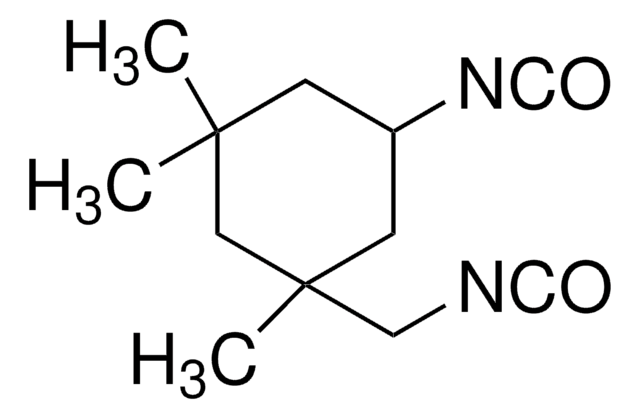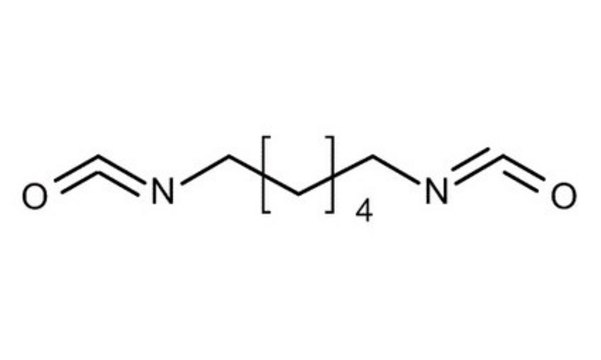418005
Poly(hexamethylene diisocyanate)
viscosity 1,300-3,000 cP (25 °C)(lit.)
Synonym(s):
1,6-Diisocyanatohexane homopolymer, 1,6-Diisocyanatohexane polymer, HMDI homopolymer
About This Item
Recommended Products
form
liquid
Quality Level
refractive index
n20/D 1.502
viscosity
1,300-3,000 cP(25 °C)(lit.)
density
1.12 g/mL at 25 °C
SMILES string
O=C=NCCCCCCN=C=O
InChI key
RRAMGCGOFNQTLD-UHFFFAOYSA-N
Looking for similar products? Visit Product Comparison Guide
General description
Application
Signal Word
Danger
Hazard Statements
Precautionary Statements
Hazard Classifications
Acute Tox. 3 Inhalation - Skin Sens. 1 - STOT SE 3
Target Organs
Respiratory system
Storage Class Code
6.1C - Combustible acute toxic Cat.3 / toxic compounds or compounds which causing chronic effects
WGK
WGK 1
Flash Point(F)
338.0 °F
Flash Point(C)
170 °C
Personal Protective Equipment
Choose from one of the most recent versions:
Already Own This Product?
Find documentation for the products that you have recently purchased in the Document Library.
Our team of scientists has experience in all areas of research including Life Science, Material Science, Chemical Synthesis, Chromatography, Analytical and many others.
Contact Technical Service








